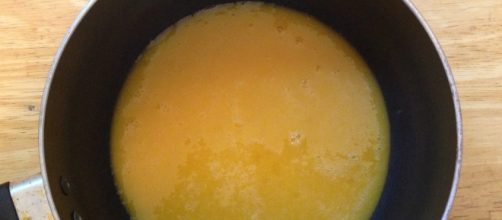A Fruit Curd is a great way to enjoy desserts, especially during afternoon tea time when one wants a nice spread for their scones or bread. It's also pretty hard to avoid given its popularity. The English made history when they concocted this delightful fruity topping/filling and there should be no pastry chef out there who hasn't at least heard of it.
Today's recipe is a passion fruit curd; a very popular variant to have on the menu. Like most types, this one's relatively easy to make and quite rewarding. But first, for those who aren't familiar with it, here's a short rundown:
What is a fruit curd?
Fruit curd is a topping or filling made from a base of thickened juices, usually citrus types like oranges, lemons, and limes.
However, other variations are made from non-citrus fruits like mango berries and of course, passion fruit. Since the 19th century, it has been used in place of jam for bread and scones, and as a filling for various cakes and pastries. Many pastries used today rely on fruit curds as fillings. These include puffs, pies, tarts, rolls and more.
To prepare a fruit curd is to prepare a custard. Hence, the juice is thickened with eggs, sweetened with sugar, and in some cases; enriched with butter. A word of advice to newbies: using a stainless steel pan or non-reactive bowl is preferred to prevent any metallic tastes that will ruin the curd. When done properly, the result is a bright, smooth, and oh-so-fruity variation of a custard.
Not everyone is a fan of fruit curd, but it can be an essential alternative to learn.
The recipe
Ingredients:
- 1 cup passion fruit juice
- 1 1/2 cup granulated sugar
- 4 extra large eggs
- 1 stick unsalted butter
- 1 tbsp of zest
Method:
- Combine the passion fruit juice, 1/2 of the sugar and zest in a double-boiler or a non-reactive bowl over a deep-bottomed pan containing water. Make sure the water isn't high enough to touch the bowl. Bring to a boil.
- Place the eggs and remaining sugar in another non-reactive bowl. Whisk together gently until fully incorporated. This is your sabayon.
- Temper the sabayon with 1/4 of the boiling juice. Add the tempered sabayon to the remaining juice and bring to a boil.
- Whisk the mixture for about 1 minute.
- Remove from the heat and chill over an ice bath until mixture reaches 49°C.
- Gradually add the butter to the mixture and beat well with a wooden spatula simultaneously.
- Use immediately as a filling/topping, or cover and refrigerate.


